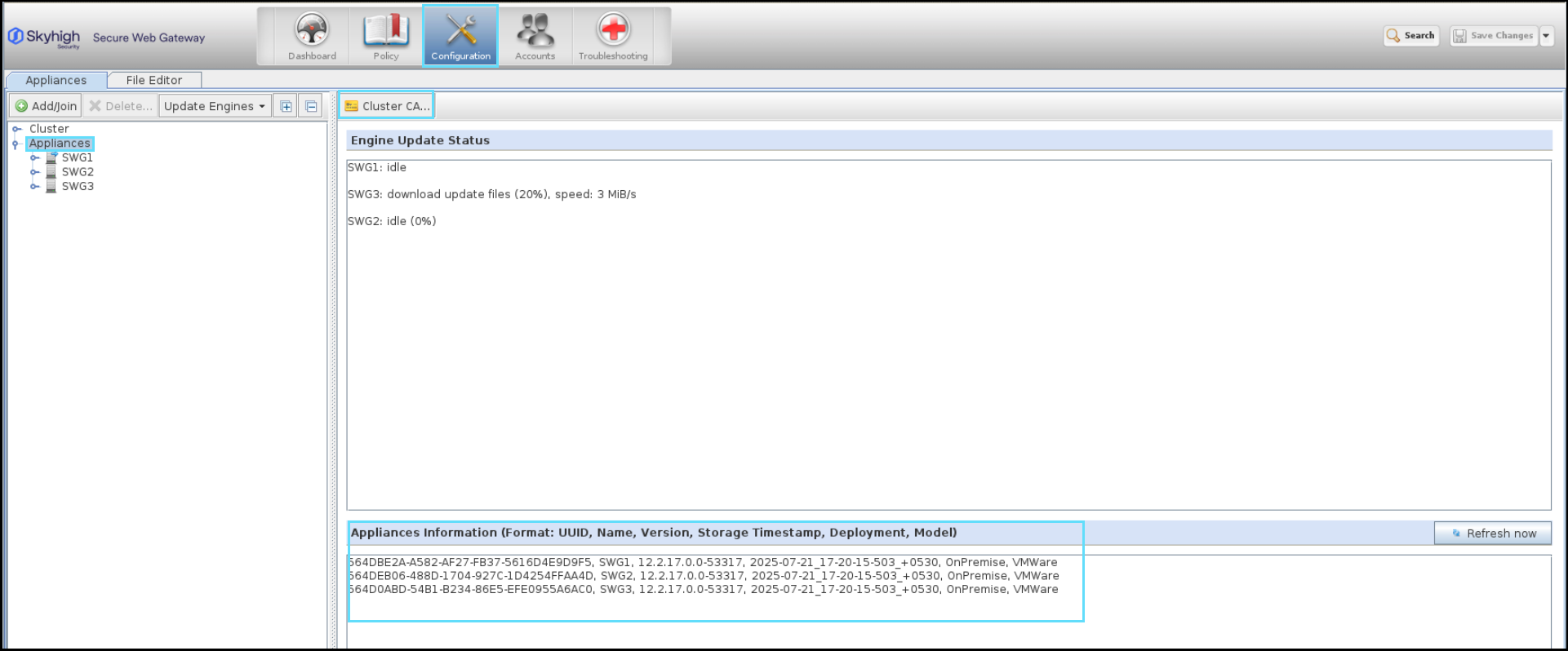Prerequisites to Upgrade Skyhigh Secure Web Gateway Appliance
Before starting the SWG appliance upgrade, complete the prerequisites to preserve configuration settings, confirm version consistency across nodes, and ensure you follow the correct upgrade procedure for your deployment.
NOTE: The upgrade procedure varies depending on the appliance configuration, such as Standalone Appliance, Appliances Configured in Central Management with External Load Balancer, or Appliances Configured in ProxyHA with Central Management. Select the appropriate SWG release type based on your environment.
Back up the Configuration
- Log on to the Web UI.
- Navigate to Troubleshooting > <appliance name> > Backup/Restore.
Select the SSO Credentials checkbox to include SSO credentials in the backup. - Click Back up to file...

The file is saved in the download folder.
Verify Configuration Synchronization and Appliance Version
To verify the appliance version for each node, navigate to Configuration > Appliances. Ensure all nodes are running the same configuration and version. For more details, see Verify the Synchronization of Nodes.

Record Network Group Details
Note the network group configuration for each SWG node by navigating to Configuration > Appliances > Central Management.

Release Type Recommendation
Skyhigh recommends using the main release (stable) with a maintenance release for upgrades. You should use the controlled release only when newly introduced features are required. For details, see Main and Controlled Releases.
The following are the three types of version upgrades to be known before upgrading appliances in central management.
Example:
- Major Upgrade: 12.x.x to 13.x.x
- Minor Upgrade: 12.1.x to 12.2.x
- Macro Upgrade:12.2.x to 12.2.x
Upgrading appliance versions without breaking the cluster can cause configuration synchronization issues when the upgrade type is Major or Minor, as newer features may include properties not supported by older versions. You can perform a Macro upgrade without breaking the cluster. It is recommended to use the yum command to streamline and simplify the upgrade process, provided that you have root access to the command line. To learn more about the feature, known issues, and bug list for the applicable version, see the SWG Release Notes.
NOTE: Most upgrades take less than 15 minutes. However, the duration may vary depending on the current installed version and the target version.
Check Dashboard Alerts
Go to Dashboard > Alerts and check for any errors on the appliance selected for upgrade. Address any issues before starting the upgrade. A common error is that the opt partition is nearly full. Also check for system load issues or connection limit warnings.
Review Error Logs
Review the mwg-errors logs (mwg-core.errors.log and mwg-coordinator.errors.log) and address any issues before starting the upgrade.
